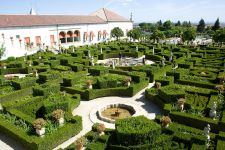The city of Castelo Branco (Portuguese pronunciation: [kɐʃˈtɛlu ˈβɾɐ̃ku] (listen)) is a municipality and former bishopric in Castelo Branco District, in Centro Region, Portugal. The name means "white castle" in Portuguese.
The city of Castelo Branco is made up of 19 Freguesias (civil parish) with a population of 30,649 in 2001. The municipality has a total of 19 parishes. The population in 2011 was 56,109, in an area of 1,438.19 square kilometres (555.29 square miles), making it one of the largest municipalities in Portugal.
It is bounded in the north by the municipality of Fundao, in the east by Idanha-a-Nova, in the south by Spain, in the southwest by Vila Velha de Rodao, and in the west by Proenca-a-Nova and Oleiros.
History
Castelo Branco gets its name from the prior existence of a Luso-Roman castrum or fortified settlement called Castra Leuca, on the summit of the hill of Colina da Cardosa. The population grew on the slopes of this hill.
Little is known of the history before 1182. There is, nevertheless, a document, from this date, mentioning the donation to the Templars of a piece of land called Vila Franca da Cardosa, by a noble Fernandes Sanches. In 1213 it received its autonomy or foral and the name Castel-Branco appears for the first time. Pope Innocent III confirmed this in 1215 giving it the name of Castelo Branco.
It was around this time that the Templar Knights built the walls and the castle.
In 1510 a new foral was conceded by Manuel I and in 1642 the town acquired the status of Vila de Castelo Branco.
In 1771 Castelo Branco became a city and a bishopric (see below) until 1881.
In 1858 a telegraph line was opened between Abrantes and Castelo Branco and in 1860 the city received its first public lighting.
In 1959 it became capital of the district of the same name.
